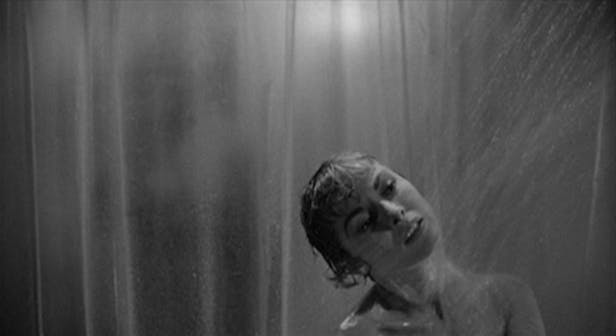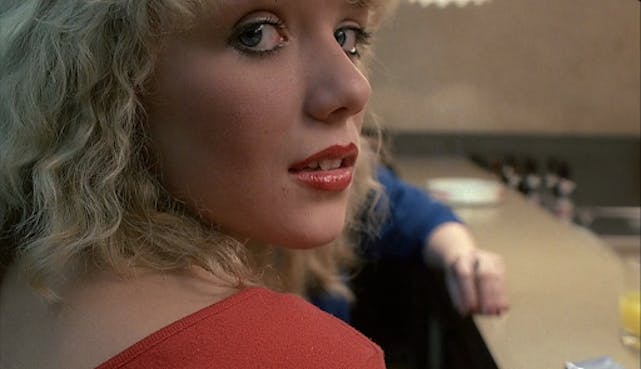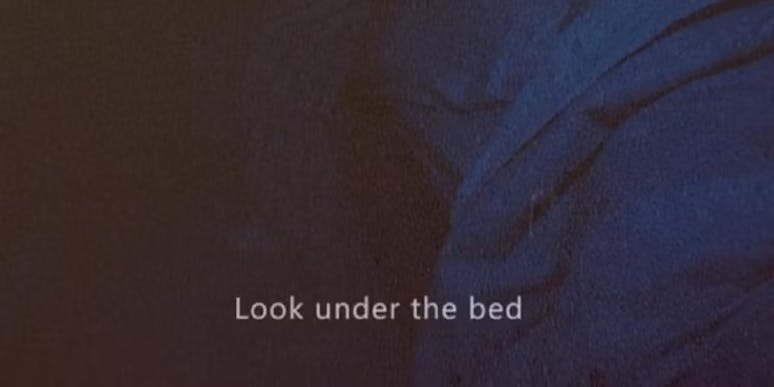In every classic horror movie, there always seems to be one moment, one scare that stands out above the rest.
While there are many stand-out scenes from horror’s greatest films, The Eagle has narrowed it down to three of our favorites. From the abhorrent to the iconic to the terrifying, these are some of the best scenes the horror genre has ever seen…
“Psycho” (1960) - The Shower

When discussing exemplary and historic horror movies, Alfred Hitchcock’s “Psycho” must always be in the conversation.
The esteemed director took on a new genre by making a horror film and shocked audiences with this dark and twisted tale. While it’s not quite as controversial as it was in the 60s, “Psycho” has stood the test of time and has become a benchmark of filmmaking in the horror genre.
Amidst all of “Psycho’s” well-crafted and memorable scenes, there remains one moment to be revered above all others: the shower scene.
This scene caps off the film’s exposition, and all the audience has seen so far is an elongated – yet still worthwhile – set-up of our protagonist’s story. To pay off her boyfriend’s debt, Marion Crane (Janet Leigh) has stolen $40,000 from her employer and is now on a journey from Phoenix to her boyfriend’s house in California. After getting caught in a rainstorm, Marion pulls into a motel for the night: Bates Motel.
Though her nerves are running high, Marion’s journey has gone smoothly. Barring a few off-putting interactions with the man running the motel, “Psycho” has shown no other signs of turning into a horror movie.
That is until Marion gets in the shower and a murderous figure approaches her from behind (pictured above).
The shower scene is a complete reversal of “Psycho’s” tone and aesthetic. Visually and audibly, this scene is a total attack on the senses. Bernard Herrmann’s jarring “The Murder” screams over the speakers while an attacker whose face is shrouded in darkness stabs at Marion.
Hitchcock’s filmmaking matches Herrmann’s stabbing music with fast-paced editing that provides ample angles of the attack. Before what is happening has even sunk in, it’s over. This nameless, faceless murderer has left the scene a mere 20 seconds after they entered it.
What remains in this scene is Marion, more specifically, her lifeless body.
It’s clear why this scene has stood the test of time; “Psycho” is almost built around it. The entire first act of the film is about building to this scene. It’s about drawing us in and making us live with Marion – experiencing her death as closely as we can.
This murder is just as much of a shock to the audience as it is to Marion. Hitchcock crafted this build-up perfectly, and in one moment of cinematic catharsis, he stuns the audience beyond belief.
“Psycho” is available to rent or buy on Amazon Prime.
“Angst” (1983) - The Sausage

Loosely based on the story of Austrian mass murderer Werner Kniesek, “Angst” is a shocking dive into its protagonist’s twisted mind: an unnamed serial killer portrayed by Erwin Leder.
Gerald Kargl’s film pulls no punches in its depiction of this psychopath. The audience knows nothing about this man except for his seemingly innate desire to kill and harm other living things – the film’s thin plot of Leder’s character breaking into a home and murdering its three residents furthers this.
“Angst” is not for the light-hearted. The film can be a headache-inducing and nauseating experience, but the film’s brilliance comes from its ability to so effectively capture the essence of this psychopath’s mind that it can make a viewer feel sick – and it doesn’t even need any of the film’s three murders to do this.
Around 15 minutes into “Angst,” our protagonist, who has just been let out of jail, enters a coffee shop on the prowl for his next victims. Immediately upon his entering, the audience is met with a dizzying birdseye view from the camera and ear-splitting clangs of his footsteps.
Like all of “Angst,” there is an intense directness to the scene. It only lasts a few minutes, and in it, the uneasy camerawork and Klaus Schulze’s eerie score produce so much discomfort and dread.
Leder trudges through the cafe to the counter and orders a sausage. The audience must watch and hear him eat his unusual meal in excruciating detail and proximity.
While this heinous character eats the sausage, the viewer sees through his eyes as he stares around this cafe, focusing intently on two women across the room.
“My imagination began running wildly,” he thinks, “I immediately imagined the greatest things.”
Although his imaginations are never explained, they don’t have to be. The camera’s close eyeballing of these women leaves little room for the character’s thoughts to be misinterpreted.
“Angst” places you directly into the shoes of this psychopath, and the effect is sickening.
“Angst” is available to stream on Tubi.
“Skinamarink” (2022) - “Look under the bed”

Not even two years old, it feels safe to say that “Skinamarink" will hold a firm place in the canon of avant-garde horror films and cinema overall.
Filmed through the eyes and minds of two young children who wake up in the middle of the night to find their father gone, followed by the disappearance of all the doors and windows in their house, “Skinamarink” looks, feels and sounds like a home video from the film’s setting of 1995. Every shot is grainy and has a consistent crackling, fuzzy stream of audio in the background.
The film is far less bothered about painting a perfect picture of our setting than it is about capturing the nightmarish mood of it. This is achieved by all of the shots focusing on the house’s liminal spaces. The viewer sees the abundance of darkness, shots of the walls and different objects around the house but never sees the faces of “Skinamarink’s” protagonists.
108 minutes of this can be quite the test of endurance, but the effect the film achieves is worth it. “Skinamarink” captures an unbelievable sense of pure evil that will bring out the scared inner child in each viewer.
The first big scare of the film happens after 40 minutes when one of the children hears a voice from upstairs telling them “Come upstairs.”
What transpires in the upstairs of the house is filmed directly through the child’s point-of-view. The viewer inches upstairs to the room where the voice came – the parents’ room – and is forced to share in this child’s angst and dread.
As we enter the room, the shape of a man – the father – sitting on the far corner of a bed can be made out through the dark. Though we know the dad has vanished from the house, “Skinamarink’s” nightmare logic means that we can’t trust anything we see.
Yet it doesn’t matter who this person is. Whoever they are, we can feel the eerie unpleasantness of their presence – this only grows throughout the scene.
As we approach the man, he instructs: “Look under the bed” (pictured above). His voice is whispered but with an echo.
The child does look under the bed, but slowly. It’s painfully drawn out; the eyes being taken off this man brews an intense anxiety in your stomach. Once under the bed, however, there is just darkness. The child looks a second time, and once again, there is nothing.
Though it sounds more like half of a scene than a full one, these few minutes are utterly terrifying.
“Skinamarink” crafts a completely unique sense of horror. You need to feel this movie, not think about it. If you can give in to its unconventional style, “Skinamarink” will leave you struck by fear.
“Skinamarink” is available to stream on Hulu.
With stunning shocks, creepy atmospheres and harsh violence, these three scenes – and films – have it all. If you’re ever in need of a good scare, you can’t go wrong with these films.
This article was edited by Bailey Hobbs, Sara Winick and Abigail Turner. Copy editing by Luna Jinks and Charlie Mennuti.





